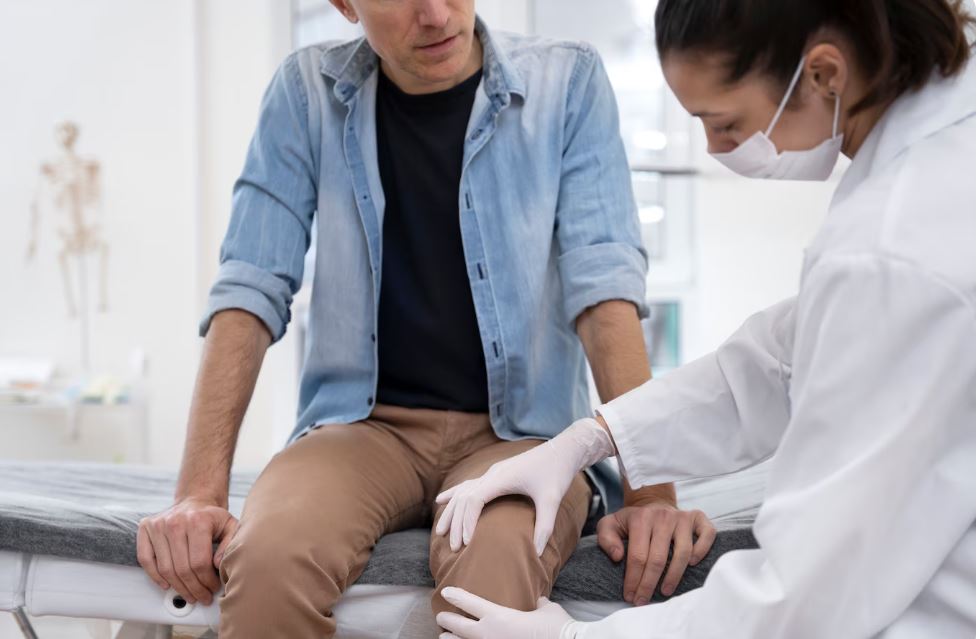
In the field of orthopedic care, arthroscopic surgery has become a revolutionary technique in recent years. Often called “keyhole surgery,” this minimally invasive technique enables physicians to perform remarkably accurate joint examinations and treatments. Imagine being able to solve a difficult puzzle with little disturbance; arthroscopy provides a detailed view of the joint, allowing surgeons to repair damage without making large incisions. With a quicker recovery, less pain, and a lower chance of complications than open surgery, this approach is a huge advancement for people with joint pain or injury.
The fundamental tool used in arthroscopy is an arthroscope, a thin, fiber-optic camera that is placed into a tiny incision. The surgeon can determine the extent of damage in real time thanks to this camera’s ability to send high-definition images of the joint to a monitor. Surgeons can repair damaged cartilage, torn ligaments, and even conditions like arthritis by making additional tiny incisions and inserting specialized tools. The knee, shoulder, and ankle are the most common joint-related problems for which this procedure is the preferred treatment due to its accuracy and efficiency.
Key Advantages of Arthroscopy:
| Benefit | Description |
|---|---|
| Faster Recovery | Smaller incisions mean less healing time and a quicker return to activity. |
| Minimal Pain | With fewer tissue disruptions, patients experience less postoperative pain. |
| Lower Risk of Complications | Reduced chances of infection and blood loss compared to traditional surgery. |
| Cosmetic Benefits | Smaller scars and minimal tissue damage enhance aesthetic outcomes. |
The Process: Fast and Accurate
The minimally invasive nature of arthroscopic surgery is what makes it so appealing. Arthroscopy only requires tiny incisions, typically no bigger than a buttonhole, as opposed to traditional open surgeries, which call for large incisions and protracted recovery periods. As a result, there is a much lower chance of infection and scarring. This means that patients will be able to resume their regular activities more quickly and with much less discomfort. Surgeons can make intricate repairs without seriously damaging the surrounding tissue by using tiny, specialized tools and cutting-edge imaging technology to gain incredibly precise access to the joint area.
When working with sensitive areas like the knee or shoulder, this accuracy is especially helpful. For instance, meniscus tears and anterior cruciate ligament (ACL) injuries are commonly treated with knee arthroscopy, one of the most popular types. In these situations, the surgeon can find the issue and fix it in a fraction of the time needed for conventional techniques. The healthcare system benefits from this efficiency as well because it saves time and money in addition to helping the patient recover.
Who Is Arthroscopy Beneficial?
Patients with a variety of joint disorders benefit greatly from arthroscopic surgery, especially those who have not responded well to nonsurgical therapies like physical therapy or medication. For example, following an arthroscopic procedure, patients with torn cartilage, ligament damage, or joint inflammation frequently experience notable improvements. Knee injuries, such as ACL tears and meniscal damage, are treated with one of the most frequent procedures. The same holds true for the shoulder, where arthroscopy is commonly used to treat impingement syndrome, shoulder instability, and rotator cuff tears.
Although it can change everything, not everyone is a good candidate for arthroscopy. Since arthroscopy focuses on specific, localized problems, patients with advanced arthritis or severe joint degeneration might not benefit as much from the procedure. Nevertheless, arthroscopy can help control symptoms and postpone the need for more invasive surgery, like joint replacement, even in mild to moderate cases of arthritis.
Risks and Things to Think About: Exercise Caution
Although they are usually small, arthroscopy has some risks, just like any other surgical procedure. Although they are uncommon, infection, bleeding, and nerve damage are the most frequent side effects. Furthermore, patients should still be aware of the healing process even though the recovery period is shorter than with open surgery. Depending on the joint involved, post-operative care usually consists of rest, physical therapy, and possibly the use of assistive devices like crutches or a sling.
In order to determine whether arthroscopy is the best option, patients should have a thorough discussion with their surgeon. Some people may need to look into alternative treatments or may not be candidates for the procedure because of pre-existing medical conditions. For instance, joint replacement surgery might be more advantageous for people with severe osteoarthritis than arthroscopic repair.
Looking Ahead: Arthroscopy’s Future
The field of arthroscopic surgery appears to have a very bright future. Surgeons should have access to increasingly more advanced instruments as technology develops, which will increase the accuracy and effectiveness of these operations. For example, robotic-assisted arthroscopy, which is currently undergoing testing in certain regions, holds the potential to advance minimally invasive surgery by providing increased precision and control throughout operations. These developments could increase the number of joint disorders that can be treated arthroscopically, increasing the procedure’s appeal to both patients and physicians.
Additionally, the medical community is likely to improve methods as more data becomes available, which will further lower risks and improve outcomes. In the years to come, arthroscopy might be utilized for prevention as well as repair. The method can be used by surgeons to spot early indications of joint degradation or even to take preventative action, particularly for athletes or people with a family history of joint issues. By keeping people active and pain-free well into old age, this preventive strategy has the potential to completely change the way we think about joint health.
In conclusion, joint care has advanced
An important advancement in orthopedic care is arthroscopic surgery. For patients with joint problems, its precision, quick recovery times, and minimally invasive nature make it an indispensable tool. Whether the problem is cartilage damage, a torn ligament, or another joint-related condition, arthroscopy offers a solution that not only lessens the body’s impact but also offers a quicker, less painful recovery.
